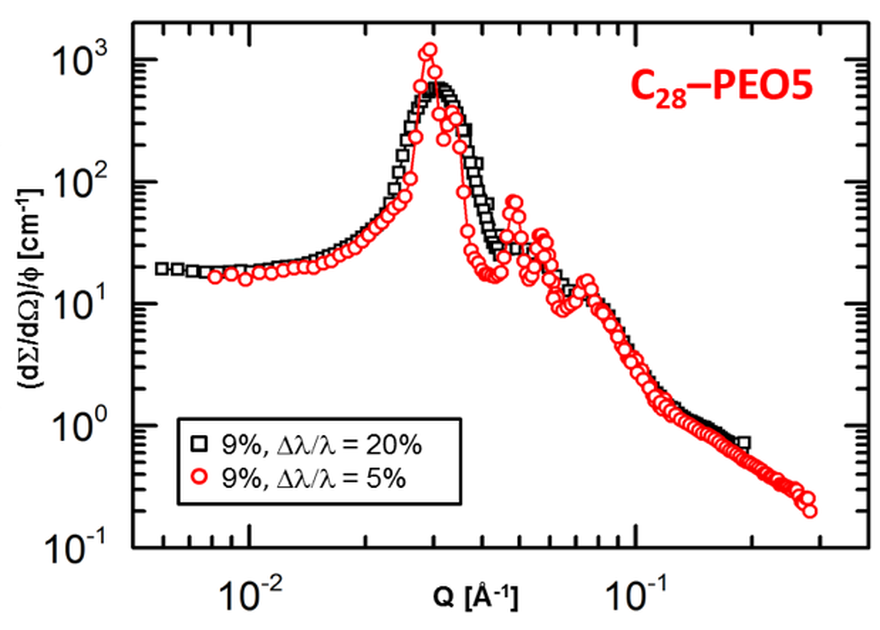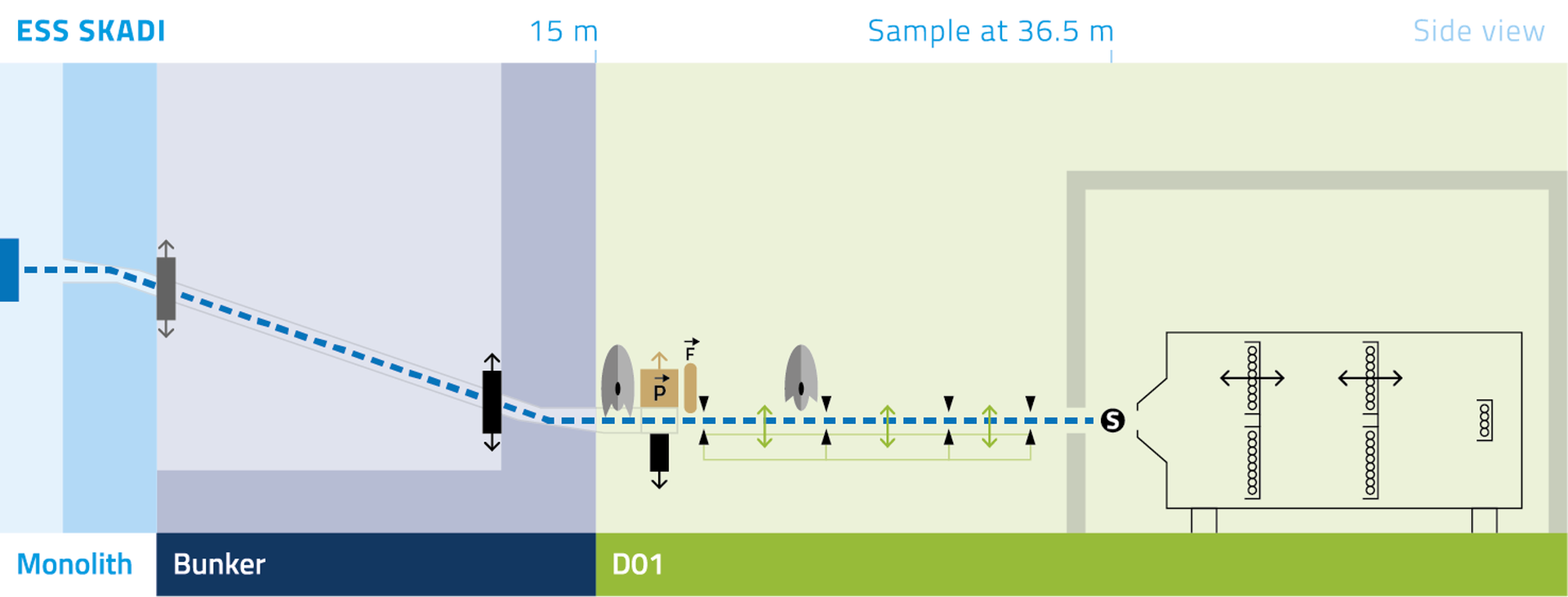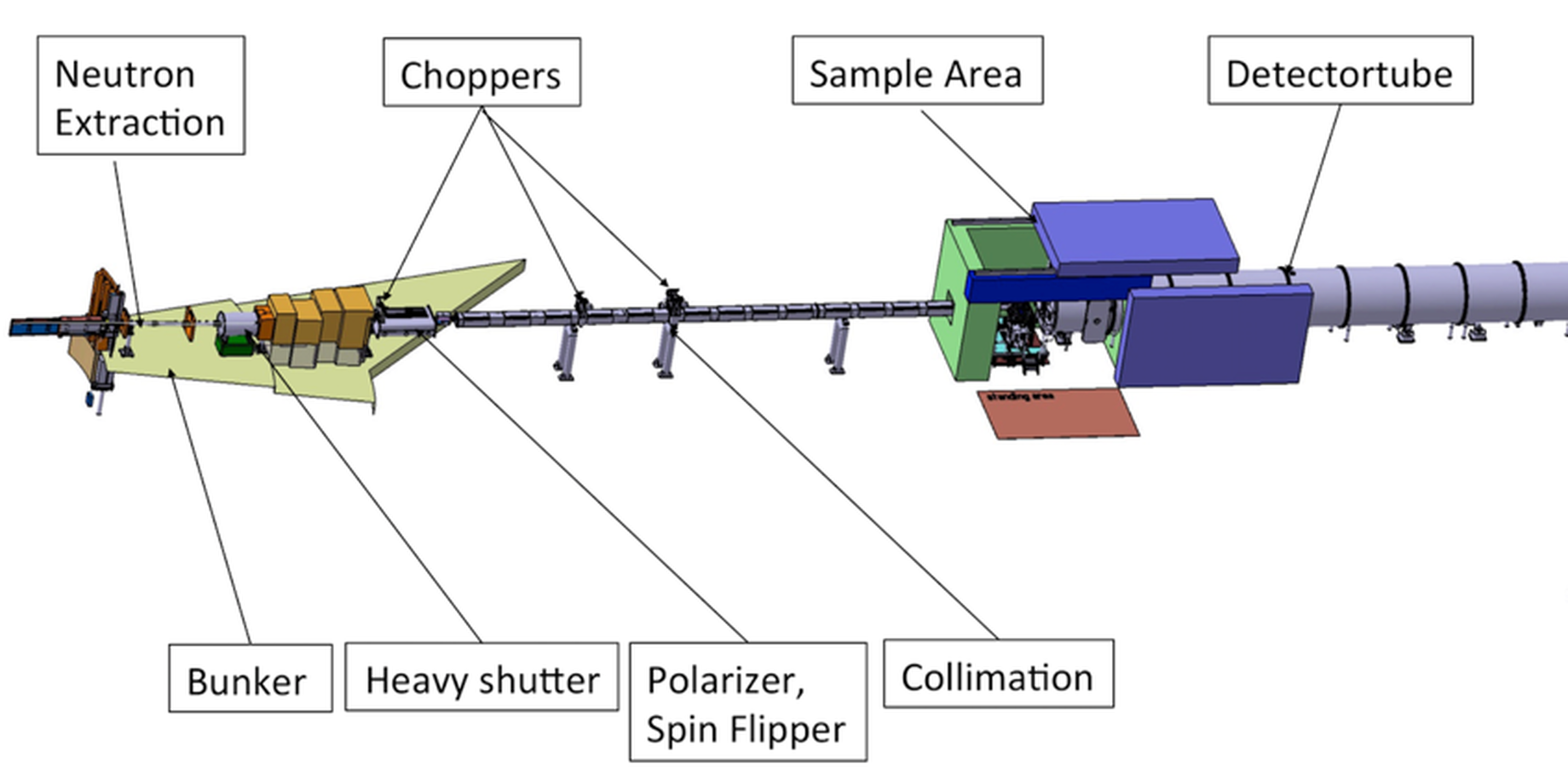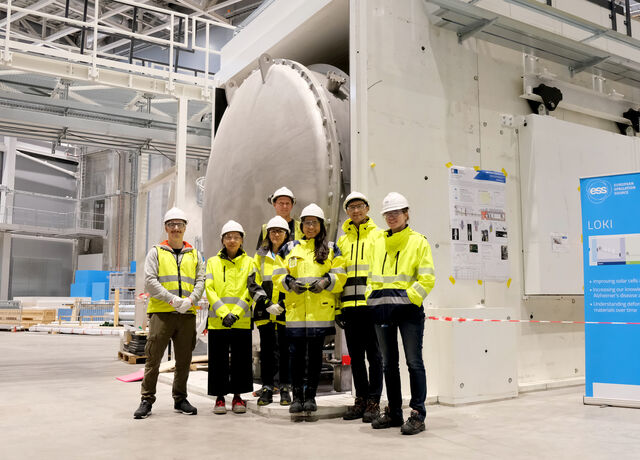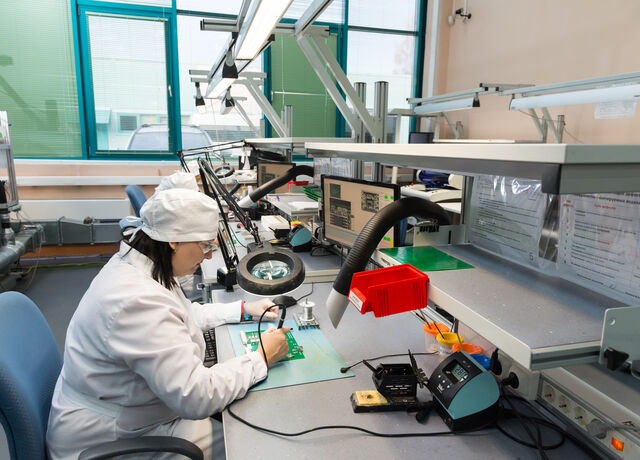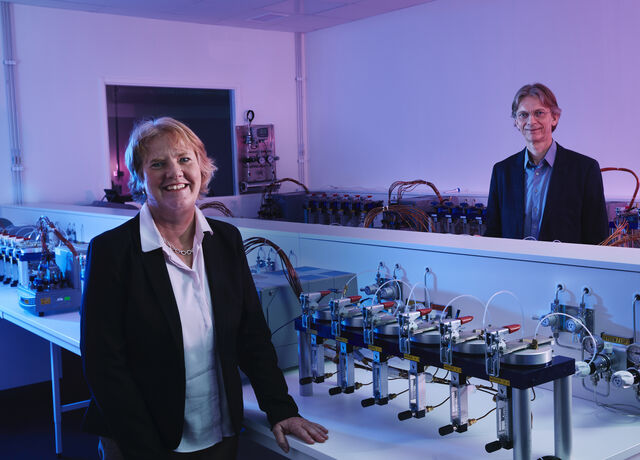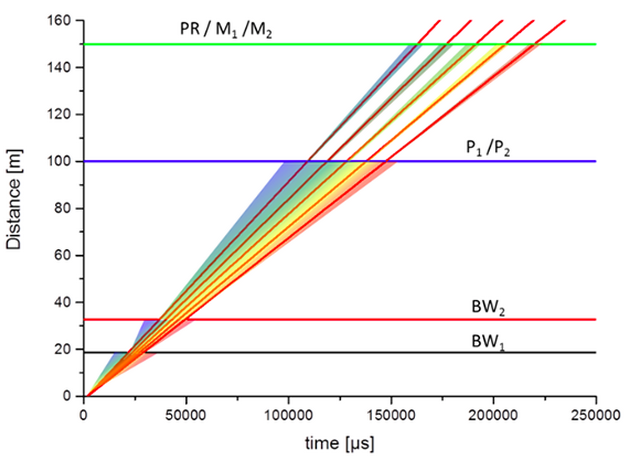SKADI
General Purpose SANS
The Small-K Advanced DIffractometer SKADI is a versatile small-angle neutron scattering (SANS) instrument, which will enable scientists to perform a wide range of investigations on topics requiring small scattering angles to access long length scales. The scientific areas targeted by SKADI include investigations of smart materials, biological and medical research, magnetic materials and materials for energy storage, as well as experiments on nanomaterials and nanocomposites or colloidal systems. These experiments promise a high potential impact on science and society. To maximize the societal applicability of these studies SKADI is designed to accommodate in-situ measurements with custom-made sample environments to provide "real-world" conditions.
Instrument Class
Beam Port
Lead Scientist
Lead Engineer
Like any SANS instrument SKADI is catering to a wide range of experimental needs. SANS makes length scales on the order of Angstroms up to micrometers accessible and is therefore extensively used when structural properties of the sample on the micro- and mesoscopic scale are of importance.
Additionally, SKADI offers the possibility to polarize the neutrons and therefore also gives access to the spin state of the atoms in the sample, which are of importance when magnetic phenomena are investigated. All this is combined with a large sample area (3x3 m2) in which a wide range of custom-made sample equipment can be installed.
All those capabilities gives rise to a plethora of possible experiments. In order to highlight those possibilities here a few examples are given:
In Situ Chemical Reaction
Being located at a high-flux source gives SKADI the possibility to reach down to timescales that were previously inaccessible to SANS experiments. This is supported by the high dynamic range of SKADI, allowing the experimenter to collect data over three orders of magnitude in Q, and hence also in real space, simultaneously. Also, single scattering images should be possible to obtain within approximately 100 ns. This allows to follow reaction and mixing mechanisms in real time. Such experiments can be pressure-release experiments where supercritical gases are dissolved in a liquid, which upon pressure release undergoes polymerization, or the mixing behavior and structure formation of two liquids.
Stroboscopic Investigations of Magnetic Liquids
Magnetic liquids are liquids in which magnetic nanoparticles are dispersed. Those can be investigated under rapidly changing external electromagnetic fields and the exhibit corresponding structural changes. When the external field is oscillating, the pulse of the neutron source can be synchronized to the external field and thus stroboscopic measurements of the sample evolution under magnetic fields become possible. In this mode, structural changes can be followed on the timescale of microseconds.
High-Resolution Structure Formation
Highly concentrated solutions often form superstructures (Quasi-crystals) of the dissolved particles. Today’s SANS instruments are limited in investigating these structures due to their limited wavelength resolution of maximum 5%. SKADI will push that limit down to 1% and open new possibilities for the investigation of superstructures on the mesoscale. This capability is also highly advantageous for the investigation of biological or medical samples, such as proteins which benefit from such an improved resolution.
SKADI is a 55 m long small-angle neutron scattering instrument. The first part of the instrument, the neutron beam extraction is within the bunker, which provides shielding against radiation coming from the target.
Here the neutron flight tube is bent, so there is no direct line of sight between the sample and the neutron source. Also the heavy shutter in order to shut of the neutron flux to the source is located there.
The neutron beam is conditioned in the collimation stretch right outside the bunker. Here the choppers, the polarizer and several blinds serve to constrict the transmitted neutrons to those useful for a neutron scattering experiment.
The sample area finally houses the sample itself and the sample environment, which provides the controlled conditions needed for an experiment. In order to also allow experiments with “real-world” environments a large 3x3 m2 is available, that allows the installation of versatile and custom-made sample environments that can provide nearly any conceivable condition, in terms of temperature, pressure, gas environment, rapid changing of those or intentional rupturing of a sample.
In addition to being uniquely accommodated to complex sample environments SKADI will also feature a newly developed detector system, SoNDe, which is developed within the EU Horizon2020 framework (funding reference No. 654124). This detector system will enable to use the hitherto unachieved flux of the ESS to capacity. While still being in the development stage, the current versions already outperform current detector technologies by a factor of four in terms of usable neutron flux. This detector is housed in the final detector tube.
Sample Environment
In order to allow for a reliable preparation of the sample environment as well as for a fast change between several sample environments SKADI is equipped with a common mounting system for the sample environment, that is also available for other instruments.
Here the sample environment can be prepared on a palette outside the sample area and any necessary alignment and characterization can be performed there. Then the complete setup is transferred to the sample area, where a common mounting system provides an accuracy of 100 µm for mounting the sample environment within the sample area. This allows to cut down the scheduled time for sample changes from usually around 6 h to half an hour and therefore provides correspondingly more available beam time.
Publications
Andersen, K. H. et al. The instrument suite of the European Spallation Source. Nuclear Instruments & Methods in Physics Research Section a-Accelerators Spectrometers Detectors and Associated Equipment 957, 39, doi:10.1016/j.nima.2020.163402 (2020).
S Jaksch, D Martin-Rodriguez, A Ostermann, J Jestin, S Duarte Pinto, WG Bouwman, J Uher, R Engels, H Frielinghaus, Concept for a time-of-flight Small Angle Neutron Scattering instrument at the European Spallation Source NIM-A, 762, 22-30, 2014.
Sebastian Jaksch, Considerations about Chopper Configuration at a time-of-flight SANS Instrument at a Spallation Source NIM-A, 835, 61-65, 2016.
Lead Scientist
Sebastian Jaksch, JCNS FZJ
Lead Engineer
Romuald Hanslik, ZEA-1 FZJ
Team
Henrich Frielinghaus, JCNS FZJ
Jacques Jestin, LLB
Sylvain Désert, LLB




























